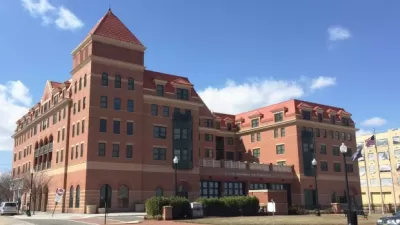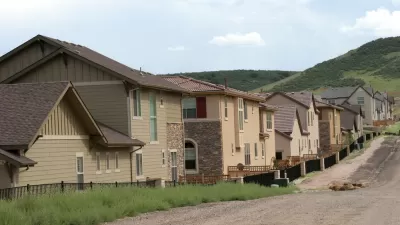This Labor Day weekend, Southern California is facing an extreme heat wave, with temperatures soaring well above 100 degrees. Air conditioners have to work overtime to keep indoor temperatures near 80, and California power resources are operating at near capacity. As condominiums bake in the sun (as they do most of the year around here), there is not a solar panel in sight. While we are still waiting for renewable energy, a few simple measures could lead to big residential power savings. Enter the laundry line, one of the oldest and most practical ways to use solar energy. Electric clothes dryers not only require vast amounts of fossil fuel-derived power, they also pour heat into living spaces and strain cooling systems.
This Labor Day weekend, Southern California is facing an extreme heat wave, with temperatures soaring well above 100 degrees. Air conditioners have to work overtime to keep indoor temperatures near 80, and California power resources are operating at near capacity. As condominiums bake in the sun (as they do most of the year around here), there is not a solar panel in sight.
While we are still waiting for renewable energy, a few simple measures could lead to big residential power savings. Enter the laundry line, one of the oldest and most practical ways to use solar energy. Electric clothes dryers not only require vast amounts of fossil fuel-derived power, they also pour heat into living spaces and strain cooling systems.
Yet hanging laundry outdoors is strictly forbidden in most Southern California apartment and condo complexes for cosmetic reasons; a beach towel over the balcony could even warrant a call from the building manager. In Europe, outdoor clotheslines are a common sight, particularly in warm Mediterranean countries. Colorful laundry lines enhance the charm of small towns and city streets, and are often photographed by tourists.
Ironically, many of the new high density residential developments in California display flamboyant Mediterranean design motifs – red tile roofs, white stucco, floral archways, and courtyard fountains. Wouldn't real clotheslines bring some authenticity to these developments, which are sometimes criticized for their theme-park style?
The clothesline issue has picked up steam in recent months. There is a nonprofit organization, Project Laundry List, that combats local housing rules that forbid line drying. Leading a national Right To Dry movement, the group recently celebrated the passage of a Florida state law granting property owners the right to use clotheslines. In April, the New York Times promoted the laundry line as a simple solution to global warming: "If all Americans line-dried for just half a year, it would save 3.3% of the country's total residential output of carbon dioxide". And just last week, the Associated Press featured a photographic journey through Portugal via the country's everpresent hanging laundry. California apartment managers should take note -- it doesn't look so bad!

Alabama: Trump Terminates Settlements for Black Communities Harmed By Raw Sewage
Trump deemed the landmark civil rights agreement “illegal DEI and environmental justice policy.”

Planetizen Federal Action Tracker
A weekly monitor of how Trump’s orders and actions are impacting planners and planning in America.

The 120 Year Old Tiny Home Villages That Sheltered San Francisco’s Earthquake Refugees
More than a century ago, San Francisco mobilized to house thousands of residents displaced by the 1906 earthquake. Could their strategy offer a model for the present?

In Both Crashes and Crime, Public Transportation is Far Safer than Driving
Contrary to popular assumptions, public transportation has far lower crash and crime rates than automobile travel. For safer communities, improve and encourage transit travel.

Report: Zoning Reforms Should Complement Nashville’s Ambitious Transit Plan
Without reform, restrictive zoning codes will limit the impact of the city’s planned transit expansion and could exclude some of the residents who depend on transit the most.

Judge Orders Release of Frozen IRA, IIJA Funding
The decision is a victory for environmental groups who charged that freezing funds for critical infrastructure and disaster response programs caused “real and irreparable harm” to communities.
Urban Design for Planners 1: Software Tools
This six-course series explores essential urban design concepts using open source software and equips planners with the tools they need to participate fully in the urban design process.
Planning for Universal Design
Learn the tools for implementing Universal Design in planning regulations.
Clanton & Associates, Inc.
Jessamine County Fiscal Court
Institute for Housing and Urban Development Studies (IHS)
City of Grandview
Harvard GSD Executive Education
Toledo-Lucas County Plan Commissions
Salt Lake City
NYU Wagner Graduate School of Public Service




























